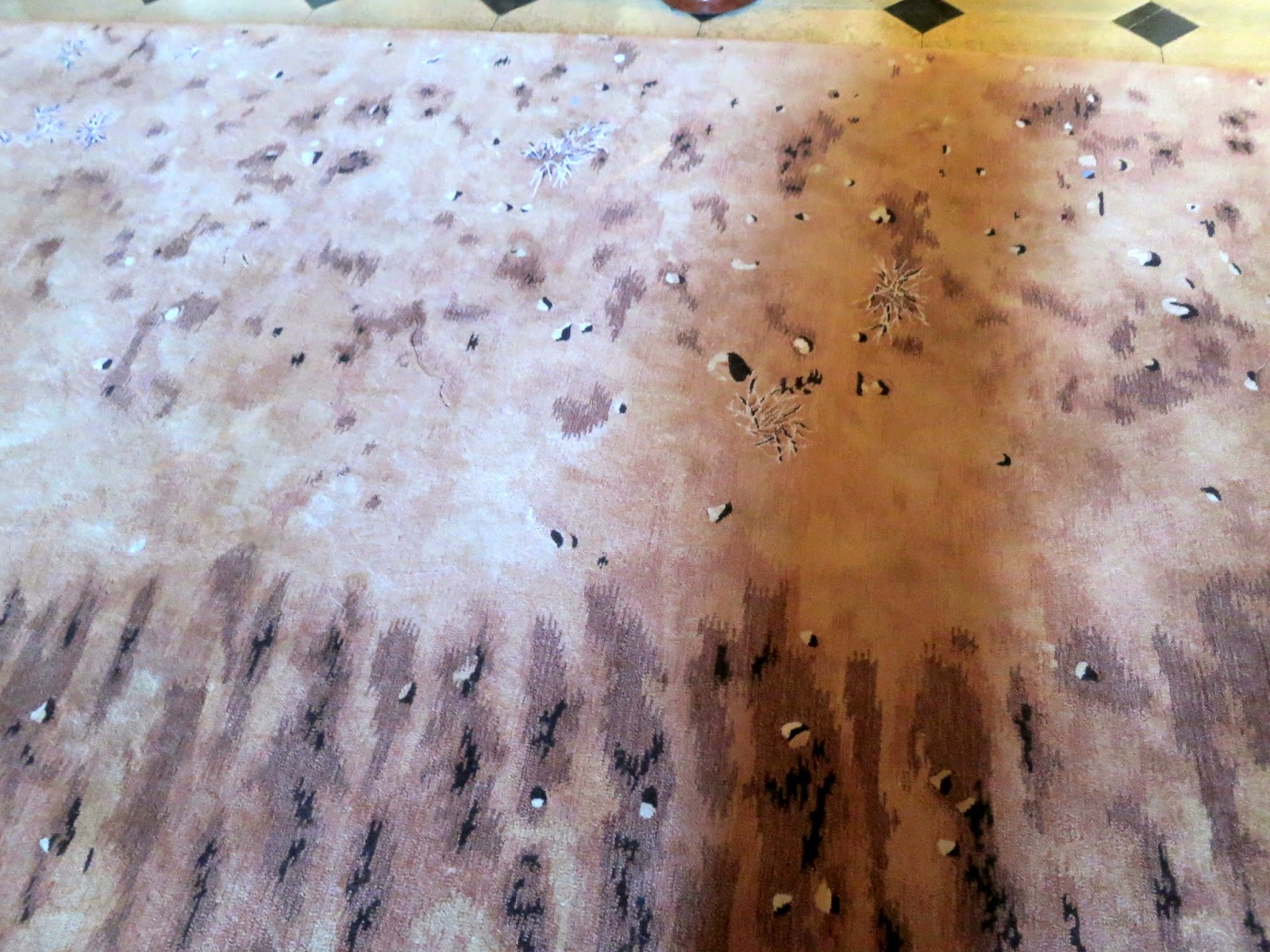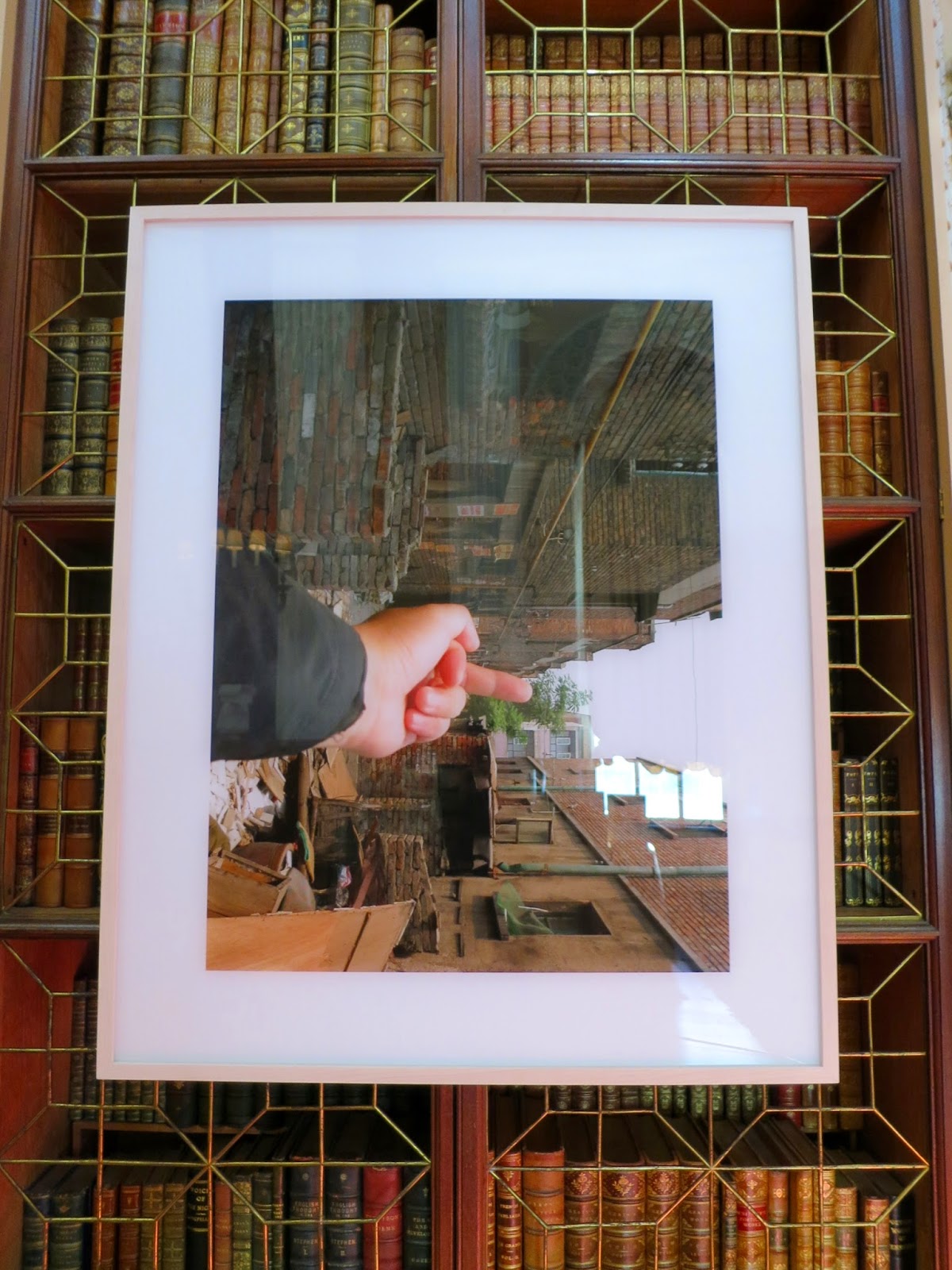Ai Weiwei at Blenheim Palace.
Unable to leave China since his imprisonment in 2011 due to his political activism, Weiwei had to use 3D models and videos of Blenheim Palace to position his 50 works of art. Nothing in the show is labelled, so it's up to the viewer to search out the Weiweis among the palace's collection of Chinese porcelain and antique furniture. We did in fact miss the marble surveillance camera which I am sorry about.
The show is a combination of old and new, East and West, good taste with bad, high culture and low, traditional art and conceptual, and a mix of periods: juxtapositions that amuse and make you think. The tapestries, paintings and furnishings are interrupted by Weiwei's art, subverting this bastion of traditionalism. All rules are broken and there is no respect for authority. At times his art seems to mock its surroundings.
Pillar, 2007
looking closer
Chandelier, 2002
This 17ft glass crystal chandelier hangs from the opulent baroque ceiling of the great hall. A signifier for conspicuous consumption it speaks not just for the opulence of Blenheim palace but also for the rise of a status-conscious wealthy class in communist China.
Amongst the pillars holding classic busts in the North corridor Weiwei has placed his own pillars which blend with the surroundings unless you look closely
Cao, 2014
looking closer
Mask, 2013
Slanted Table, 1997
In the middle of a small anteroom full of photographs of Winston Churchill stands the 'altered' Qing dynasty table.
Handcuffs, 2012 and Hanging Man in Porcelain, 2009
The handcuffs, made of valuable huali wood, are placed on Churchill's bed.
Above the bed, a profile of Marcel Duchamp made out of a wire coat hanger.
Ruyi, 2006
Watermelon, 2006
Beneath a showcase of greetings cards that Churchill made, is Watermelon.

Han Dynasty Vase with Coca-Cola and Caonima Logo, 2014
The vase is a Han dynasty one.
Soft Ground, 2014
looking closer
Owl House, 2010
looking closer
Sunflower Seeds Stool, 2014
looking closer
Han Dynasty Vases in Auto Paints, 2014
Weiwei covered these Han dynasty (202 BC to 220 AD) vases with car paint
He Xie, 2012
2,300 hand-painted porcelain crabs. The installation refers on censorship, playing on the similar-sounding 'river crab' and 'harmonious', part of a Chinese Communist slogan.
Grapes, 2011
looking closer
Circle of Animals, 2010
Inspired by the fountain sculptures in the Summer Palace in Beijing that were torched and looted in 1860 by French and British soldiers, Circle of Animals is a collection of gold-plated Zodiac animals. The regal yet cartoonish animal heads are a reminder that though the Cultural Revolution destroyed much of China's artistic heritage, the West is by no means blameless.
one more view
Marble Chair, 2008
looking closer
Map of China, 2009
Bowl of Pearls, 2006
250kg of freshwater pearls in a giant rice bowl
Divina Proportione, 2006
looking closer
there were three of those in the Long Library which was designed by Nicholas Hawksmoor
Study of Perspective, 1995-2011
Also in the Long Library, Weiwei's 40 images from the extensive series 'Study of Perspective', dating back to the 1990s - blown up snapshots of the artist sticking his middle finger up at symbols of influence, from Big Ben, to St Paul's, Tate Modern to a super-yacht. Is he metaphorically giving the finger to Blenheim itself? Weiwei is not just a great artist, but has also never been afraid of taking on the powerful.
The bridge and the Column of Victory were our view as we left the palace
we walked through the arched passageway
and we headed towards the car park with a different view of the bridge on our left.
Sources:















































No comments:
Post a Comment